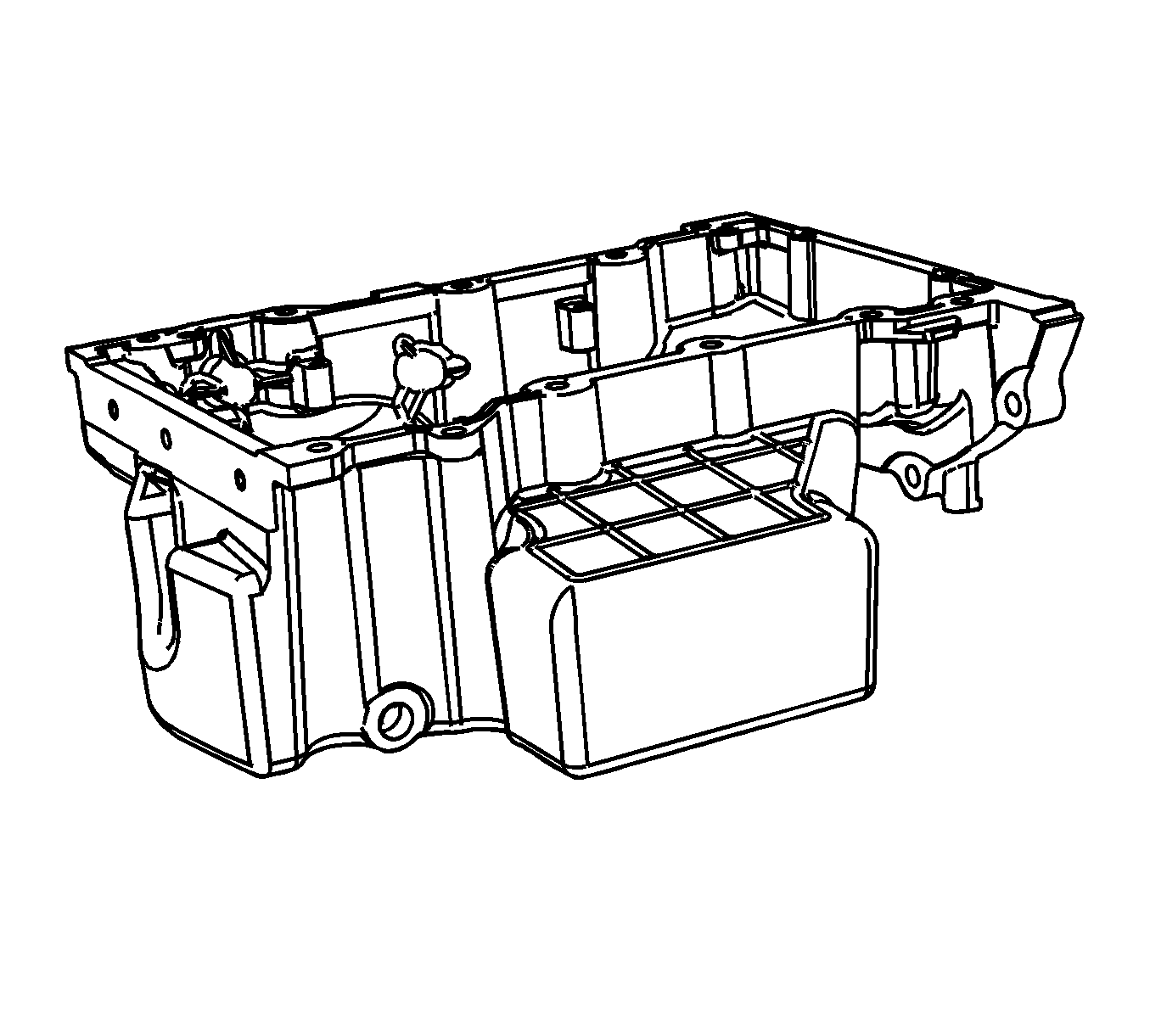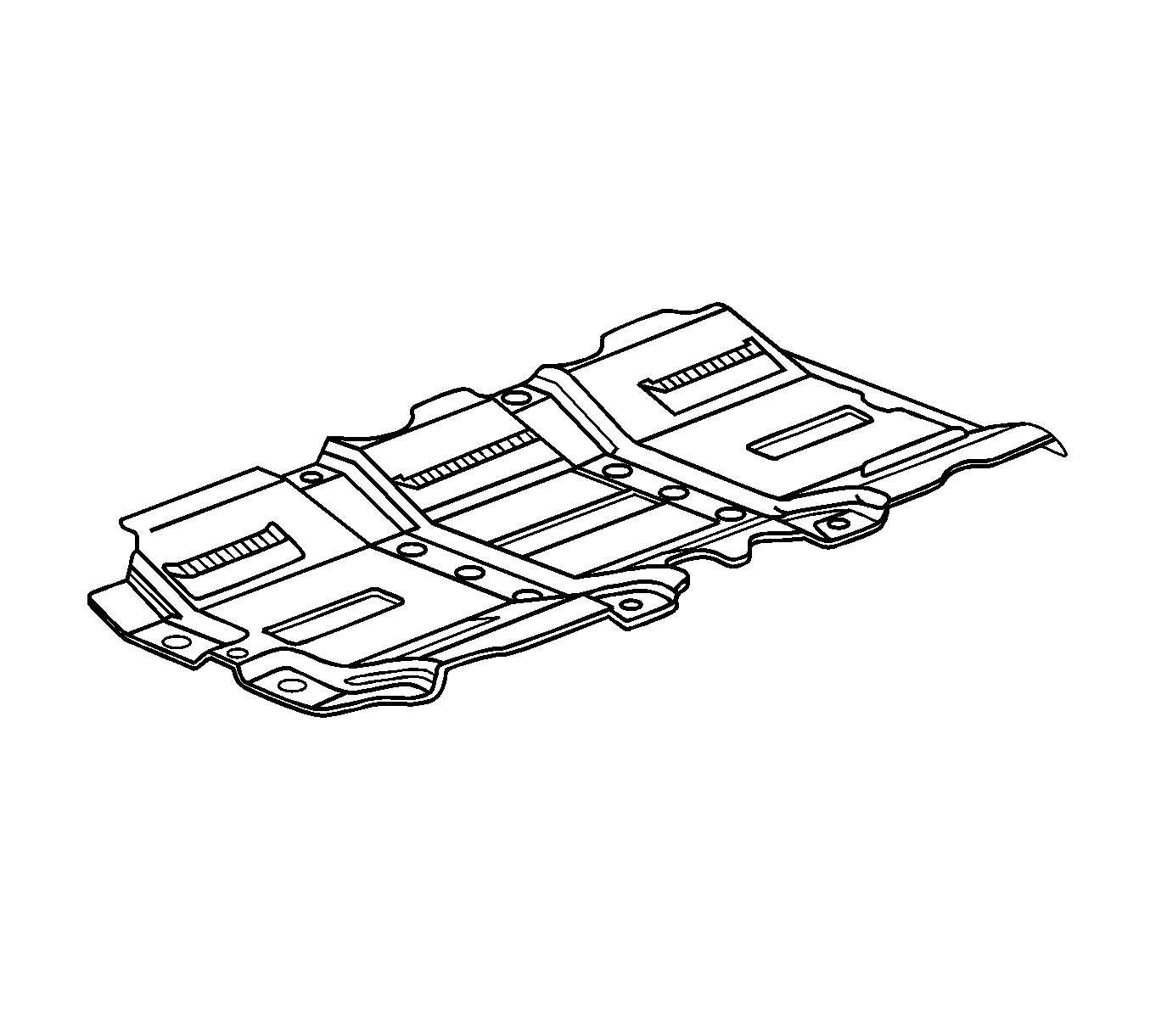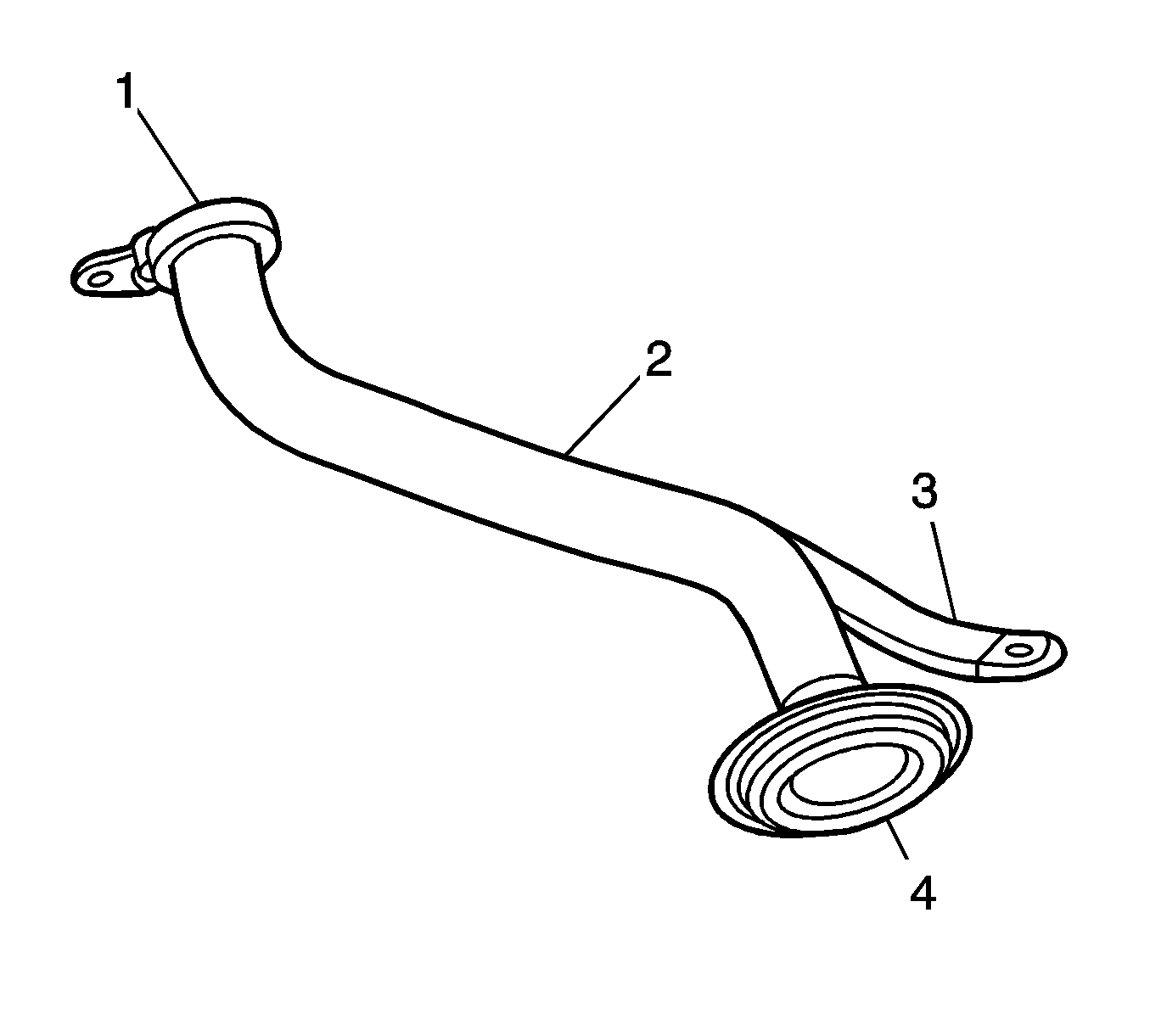- Remove any remaining thread sealant, gasket material or sealant using a commercially available wooden or plastic scraper.
- Clean the oil pan and oil pan components in solvent.
- Clean out debris from the bolt holes.
- Dry the oil pan and oil pan components with compressed air.

- Inspect the exterior of the oil pan for the following conditions:
| • | Damage to the drain plug or drain plug hole |
| • | Damage to the transmission mounting bosses |
| • | Damage to the oil level sensor threads |
| • | Dents or damage to the exterior |
- Dry the oil pan and oil pan components with compressed air.
| • | Gouges or damage to the oil pan sealing surfaces |
| • | Damage to the crankshaft oil deflector |
| • | Damage to the bolt holes |
| • | Damage to the oil suction tube mounting bosses |
| • | Damage to the crankshaft oil deflector mounting bosses |

- Inspect the oil pan scraper for damage.
- Repair or replace the oil pan and/or oil pan components as required.

- Inspect the following:
| • | The mounting face (1) of the oil pump suction pipe for possible leakage paths. |
| • | The oil pump suction pipe tube (2) for cracks, imperfections and/or damage. |
| • | The oil pump pipe support bracket (3) for cracks or damage. |
| • | The oil pump screen (4) for blockage, foreign material, tears, cracks and/or damage. |
- Repair or replace the oil pan and/or oil pan components as required.



